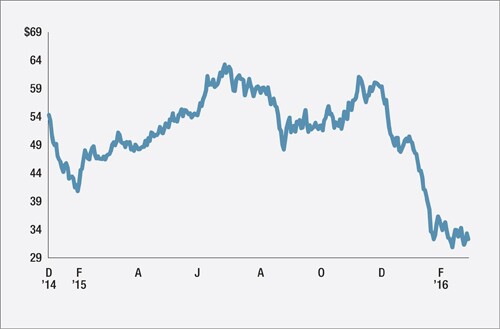

MidSouth Bancorp (down 55%)

Green Bancorp (down 32%)

Texas Capital (down 30%)

Independent Bank Group (down 26%)

Regions Financial (down 22%)

Comerica (down 21%)

Cullen/Frost Bankers (down 20%)

Hancock Holding (down 19%)

Prosperity Bancshares (down 19%)

LegacyTexas (down 18%)






